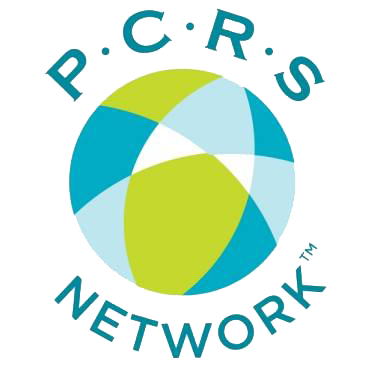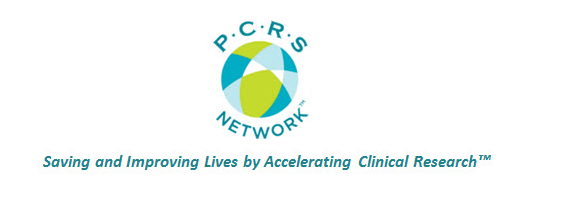This is the eighth installment in the series on changes coming to the Clinical Research enterprise that John Neal, CEO of PCRS Network, began in April 2016, with the prediction that “major changes are coming that will be disruptive, displacing many people currently working in the industry.”
John first presented that prediction, and those that have followed, at the ACRP 2016 Meeting & Expo in Atlanta in April 2016 in a presentation on the “Future of Clinical Research” during the ACRP Executive Summit on Site Strategies.
For background information as to what is driving the changes John predicts are coming, please see the first article in this series titled “Change is in the air.”
Based on his research, John made eighteen primary predictions at the Summit. Because he based each prediction on numerous interviews, significant background data compiled in researching the topic, and other relevant information, he is presenting them in a series, with one or more predictions incorporated into each post.
John’s first seven posts predicted that . . .
- Major changes are coming that will be disruptive, displacing many people currently working in the industry
- There will be a decrease in the number of single drug studies in the future;
- The process by which Sites are selected to conduct studies will be radically transformed, and
- fewer sites will be needed in the future
- Fewer Principal Investigators will be needed in the future, and
- Sponsors will slowly begin increasing the number of subjects each site is allowed to enroll
- Attention will turn more toward prevention, rather than cures
- There will be fewer studies involving large numbers of subjects as attention turns toward rarer diseases
The drug development pipeline will change dramatically, and we will see an increase in Investigator Initiated Studies (IIS)
His eighth prediction is . . .
Fewer study visits will be conducted at research Sites
From John Neal:
In this post, I predict that fewer study visits will be conducted at research Sites
In Part 3 of this series I touched on some issues related to this prediction in stating that “As individual patients are identified, prescreened, and in many cases “assigned” to a Site, the dynamics behind where study visits occur, and who should conduct them will begin to change.“ Here I want to elaborate, because where, when, and who collects study data is going to radically change study conduct as we know it today.
The changes I see coming that will cause a decrease in the number of study visits conducted at study Sites will result, not from a single factor but from a combination of many factors. Each will contribute slightly to the changes, but together, they represent a major change to the industry.
In no particular order, the primary factors I see coming together include, but are not limited to,
- increased use of “in-home” visits
- adoption of remote visits (visits conducted at locations other than the Principal Investigator’s (PI) location), and
- virtual visits
My definition of Home visits (HV) are and study visits conducted by a clinical trial professional who goes to where the study volunteer is located, as opposed to the volunteer traveling to the research Site. This is not a new idea. In fact, many such visits are already occurring. For the most part, these types of visits have been limited to volunteers who are nonambulatory. In order to attract volunteers who otherwise would not volunteer to participate in a study because of the inconvenience of traveling to the research Site, I believe an increasing number of studies will allow for HVs for ambulatory people.
My definition of remote visits (RM) may vary slightly than others. I define them as those research visits where the visit is conducted at a medical facility location other than that of the PI. These are visits requiring the attention of a medical professional, but that do not necessarily require the PI to be present. This is a departure from the conventional model, and could represent an avenue to access additional volunteers from the patients of Primary Care Physicians (PCP) and Specialists who do not otherwise conduct research.
While speaking with Dr. Janet Woodcock, Director of the Center for Drug Evaluation and Research (CDER) recently, she told me “My theory is that, for some studies, we could relax a little bit and allow community doctors to complete some of the study visits at their office rather than the PI’s office. It would be better for the patients and would probably increase the speed of enrollment.” Such flexibility by the FDA to modify where and by whom certain study visits occur could open avenues to access volunteers that has been virtually untapped to date.
RVs can be supported by “mobile” research staff, such as having a CRC travel to the PCP or Specialists
office for the conduct of the visit. In some respects, that is commonly employed in some Site Management Organization (SMO) models today, although they typically establish the PCP or Specialist as the PI for the studies conducted at their location. In that model, the SMO provides all research related staff and infrastructure, so the PI does not have the burden of adding and managing staff.
“Remote site visits decrease the logistical burden clinical trials place on subjects and provide another degree of connectivity to the patient to complement the traditional, episodic site-based visits.”
Michael O’Brien
President of the Clinical Trials Division at AMC Health
“Remote site visits decrease the logistical burden clinical trials place on subjects and provide another degree of connectivity to the patient to complement the traditional, episodic site-based visits,” said Michael O’Brien, President of the Clinical Trials Division at AMC Health. “Additionally, collecting data directly from patients in their homes is an important step in enabling a more patient-centric clinical trial.”[i]
Pfizer was the first to test the waters with a completely remote trial in 2011 with its REMOTE study of Tolterodine ER in subjects with overactive bladder. Although Pfizer terminated the study before completion due to low enrollment, they received tremendous support from the FDA and two IRBs for applying the study methodology. Pfizer has continued to pursue use of RVs, including two currently recruiting studies of different types of breast cancer. [ii] We will definitely see an increased use of RVs in the future.
Finally, we come to Virtual visits (VV), which may not be a visit at all, in the conventional sense, but that, nevertheless, accurately collect critical study data. Included in this category are
- Video
- Wearable collection devices
- Mobile data collection devices
In certain types of studies, video visits may take the place of some office visits (OV), or could be part of a HV or RV. In a study completed in March of 2014 comparing the relative efficacy and cost of video visits versus OV in follow-up visits of patients who had radical prostatectomy procedures completed, the researchers found “ equivalent efficiency, similar satisfaction, but significantly reduced patient costs for video visits compared to OV. “ [iii]
Many studies have already incorporated data collection from wearable devices (see Part 6 in this series.) Nearly universal use of smart phones, simplicity of apps, and increasing numbers of wearable data collection, monitoring, and transmission devices provide opportunities to both expand research, while bringing the cost down simultaneously. As many more studies embrace innovative data capture technologies, the amount, and hopefully, the quality, of data collected will increase rapidly. In Part 9 of this series, I will go into detail on the impact of technology that will drive changes in the industry.
As we gain experience with these new data collection capabilities, the industry will discover that study design can be radically transformed, resulting in far fewer OVs. The current model requiring large numbers of research Sites will be replaced by a streamlined model incorporating all the variables above, and as I predicted in Part 3 of this series, fewer sites will be required. All stakeholders need to prepare and adjust, as this becomes the new normal.
Share your thoughts on this topic and stay tuned for more predictions.
Check back soon to see prediction #9.
[i] AMC Health Releases Application for Remote Clinical Trials Visits, PRNewswire, May 7, 2014
[ii] ClinicalTrials.gov identifiers NCT02650193 and NCT01176916, verified August 19, 2016
[iii] Viers BR, Lightner DJ, Rivera ME, Tollefson MK, Boorjian SA, Karnes RJ, Thompson RH, O’Neil DA, Hamilton RL, Gardner MR, Bundrick M, Jenkins SM, Pruthi S, Frank I, Gettman MT, European Association of Urology, April 18, 2015, http://www.ncbi.nlm.nih.gov/pubmed/25900782
Copyright © 2016, PCRS Network, LLC. ALL RIGHTS RESERVED.


